Back when I was working for the Pentagon’s Private Spy Ring, I did not take the ranting of my boss, the legendary Dewey Clarridge, about how the CIA is worthless seriously. Dewey had been a CIA standout who had gotten into all sorts of mischief during his 33-year-long career. Want to know how good a spy Dewey was? Look at his Wikipedia page right now, and you’ll see a picture of Michael Furlong, not Dewey. That’s how good he was.

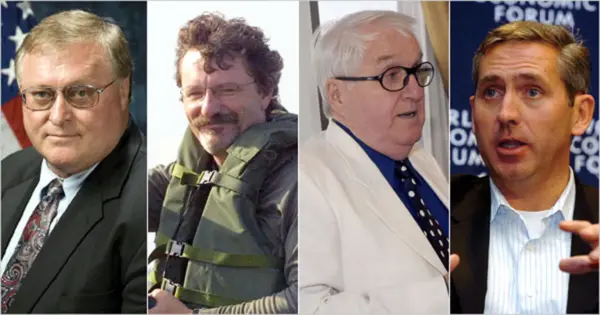
I was thinking about Dewey as I watched the seventh episode of Spy Ops titled Taliban Spies. It’s a classic example of how the Afghan elites scammed millions of dollars from our gullible CIA. The episode features interviews with four men: CIA case officer Gary Harrington, British journalist Toby Harden, an Afghan interpreter from the Panjshir Valley named Rasul Rasekh, and Dr. John “Brutus” Buffin, the Global Response Force (GRS) team leader who provided security for this operation.
The Brit journalist provides the master of the obvious (MOTO) commentary explaining the background in Afghanistan for an audience who knows nothing about our Afghanistan experience. That may be intentional as, according to recent polling by Rasmussen, only Democrats under the age of 40 have a favorable opinion of the CIA, so this is playing to their base. The episode starts with the case officer, Gary Harrington, being introduced to Afghanistan’s Minister of Defense, General Wardak, by his station chief and ordered to find ways of helping the Afghans out with spy magic. General Wardak handed the case agent off to Marshall Fahim, who was the Minister of Defense until being dismissed the year prior because he was not college-educated (a requirement for the Defense Minister according to the new Afghan constitution). In the documentary, Fahim is called “General Fahim,” which ignores the Marshal rank awarded him by President Karzai when he was forced out of the defense ministry. One would think the CIA was keen on these nuances of the Afghan leadership, proving you don’t get what you pay for from federal agencies.
The interpreter, Rasul Rasekh, like Marshall Fahim and General Wardak was from the Panjshir Valley and he describes himself as a “independent contractor”. His English is almost flawless, but from what I can gather, he fought against the Soviets and Taliban with the Northern Alliance, so I’m not sure where he picked up the language skills. He describes how he provided expert knowledge of tribal dynamics, which is, again, a dubious contention. You’re average Panjshiri knew very little about the Pashtun tribes and were about as welcomed in their lands as we were. How he gained any insight or expert knowledge about the Pashtuns is never explained, but it was clear he knew both Fahim and Wardak well, which was the key to pulling this scam off.
Fahim sets up a meeting with the secret agent and a “Taliban Mullah” who was not a combatant but one who sent suicide bombers to Kabul from Pakistan. What self-respecting Taliban “Mullah” is going to walk into the American embassy in broad daylight? Not one who wants to survive his return to the Taliban – it’s not like they and about 13 other international spy agencies weren’t watching the embassy like hawks noting every Afghan who walked into the secure area. But ignore that as the tale gets weird quickly when the secret agent describes the death-defying risks of walking out of the pedestrian gate to meet his alleged Taliban recruit out in the open surrounded by unvetted Afghans.
As the agent clears the embassy gate, he claims to look to his left and spots two sketchy-looking dudes parked in a black Toyota Corolla, which is improbable. When you walk out of the embassy pedestrian gate onto Massoud Circle, the circle itself is off to the left, and nobody stops there. The agent goes on to claim this same vehicle blew up an SUV full of American soldiers, which again is highly unlikely. The VBIED entered Massoud circle well ahead of the target vehicle, a white B7 SUV, and went around the circle for a head-on attack. I never heard of a VBIED that contained two terrorists, although I guess a handler could have been in the vehicle before an attack.
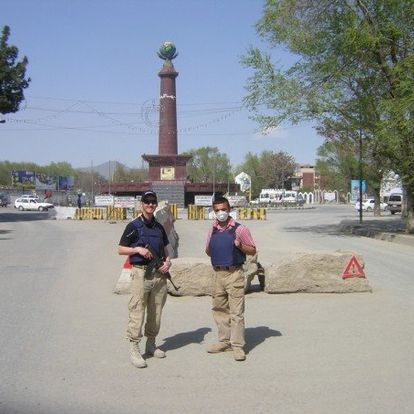
The Mullah claims to have 29 Taliban fighters in Pakistan willing to come over the border to talk with the CIA. All the CIA needs to do is drive down to the Torkham border and pick them up. But they can’t come across the regular border crossing because they’re Taliban, so they use a “wadi” next to the border crossing that is also heavily trafficked. I know exactly what he’s talking about, and he’s correct that people using that crossing were not going through customs, but they were paying, on both sides of the border, for the privilege of crossing there, and the fees were steep.
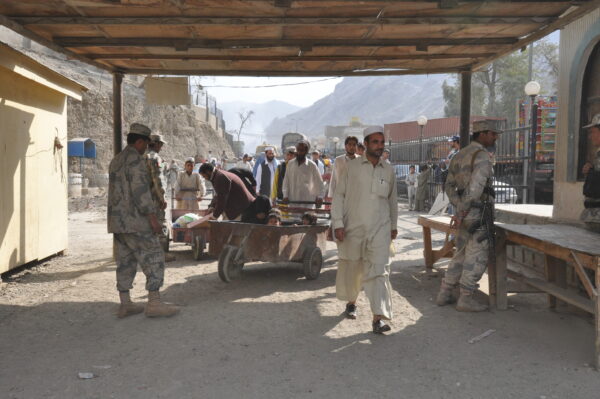
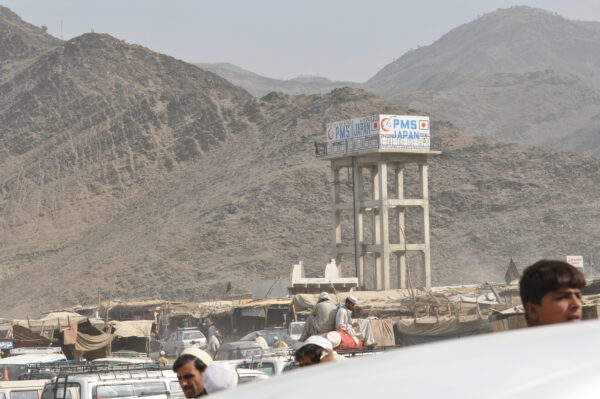
The CIA agent then asks Dr Brutus to help him out with a security detail, and he then gets lots of airtime explaining the dangers involved with this meeting. To mitigate the potential for disaster, the 29 “Taliban” are instructed to approach the CIA agent, standing there next to Marshal Fahim, one at a time so the agent could give them a 3 kiss and hug that would allow a quick search for weapons or a suicide vest. This is another ridiculous contention that defies easy explanation. As the agent himself notes, Fahim had worked with and knew the Haqqanis, and it is inconceivable that he would expose himself to one of their suicide bombers at a border crossing they controlled.
The CIA would learn in 2009 at Camp Chapman the folly of not searching cooperating bad guys before letting them near anyone of importance. Marshal Fahim’s mentor, former President Rabbani, was killed in his home by a bomb secreted inside a turban by a suicide bomber, so letting one near you is less than optimal. Having a half dozen GRS shooters with you is rather pointless if you’re not going to use them along with Marshall Fahim’s militiamen to do basic stuff like screen Taliban defectors. One explanation (and the most likely) is the “Taliban” had already been screened by and were working for Marshall Fahim.
Next, we are given a detailed description of the dangerous 3-hour drive between Jalalabad and Kabul. That drive, in September of 2006, took a little over an hour because the road had just been paved that summer, but never mind. Although there are plenty of hairpin turns in the Kabul Gorge part of the drive, they aren’t dangerous. Driving through the Salang Pass was dangerous. To prove that point, the B roll running during the description of the hazards of the Jbad to Kabul road was clearly filmed in the Salang Pass.
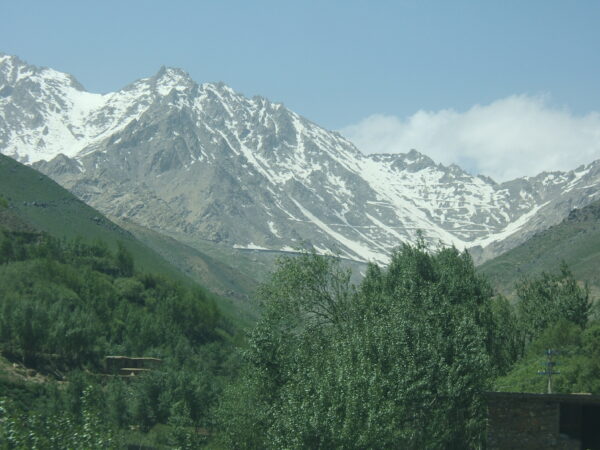
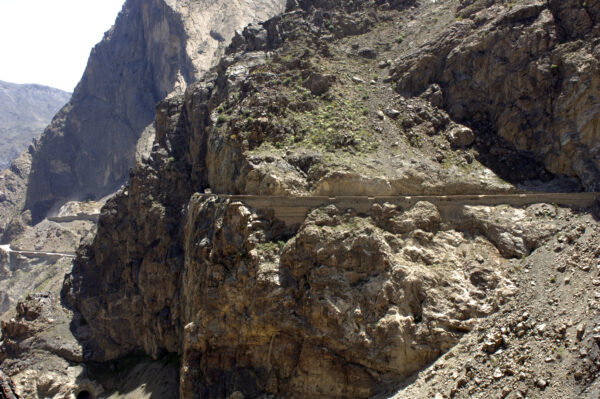
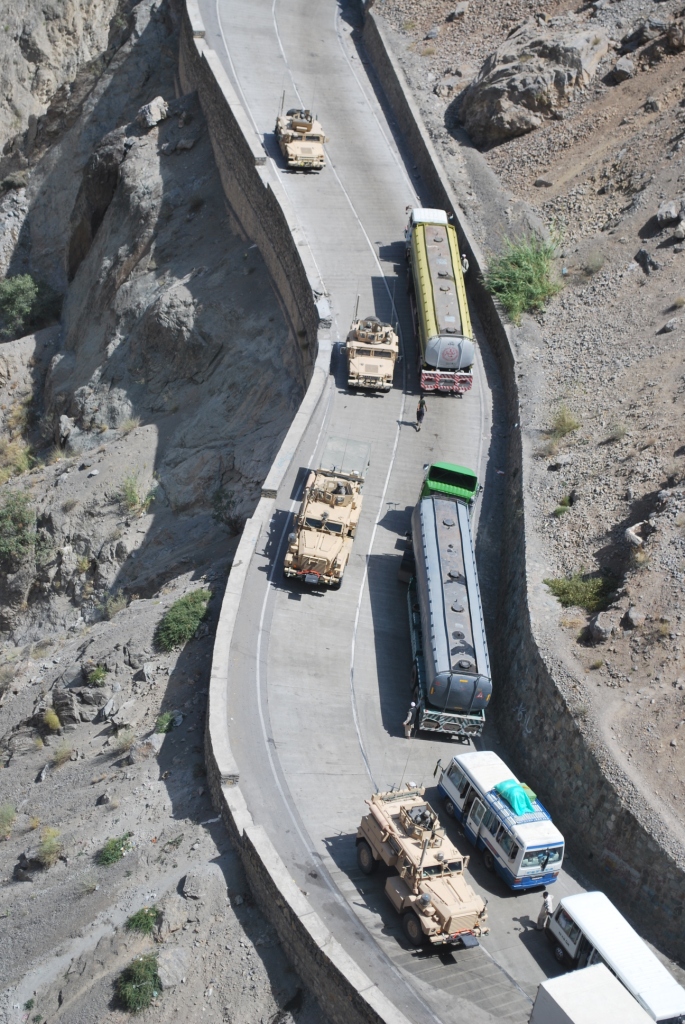
Next up in this harrowing adventure was what to do with the 29 “Taliban” once they get to Kabul, where the CIA has no safe houses. They call General Wardak, who is reportedly furious but finds them a nice giant compound in the posh Sheri-e Naw neighborhood that has a basement large enough to hide 29 Taliban. The CIA interviews all these dudes and selects six they think they can work with, sending the rest back with some cash and a promise not to fight in Afghanistan with the Taliban. The rest of this stupid story concerns nonsense about meeting Taliban suicide bombers over the ensuing years and impressing them because the Secret Agent man is a good dude or something. At this point of the program it was difficult for me to pay close attention because I yelling at the TV.
It is profoundly disturbing to watch our government whitewashing history to make the incompetent appear competent, but that is exactly what this film represents. Every part of that operation was controlled by two men, Wardak and Fahim, who were obviously making bank off the gullible CIA. Where did they get the bus to transport 29 “Taliban”? Marshall Fahim, just like the guards watched the “Taliban,” those men had to pay. Who paid for the massive compound that housed the Taliban? Who paid for the cooks and food to feed all these people? Who paid to outfit the giant compound? They needed to furnish the entire house, too, including the rooms used by the CIA-sponsored GRS guards, and that wasn’t cheap.
The CIA ran this operation for at least two years, paying their “Taliban” spies the whole time and getting in return nuggets of intel including the famous bus full of explosives busted at the Torkham border. I remember that bust because the contention that it contained IED explosives was preposterous. As you can see in the picture below, that bus was full of commercial explosives that were way too valuable to the continued reconstruction of roads and bridges and the mining of gemstones to be used for IEDs. Importing commercial-grade explosives into Afghanistan was next to impossible due to our own State Departments procedures, so construction companies paid top dollar for explosives provided by their connected fixers. The 2008 bus bust wasn’t a counterterrorism operation; it was a business transaction.
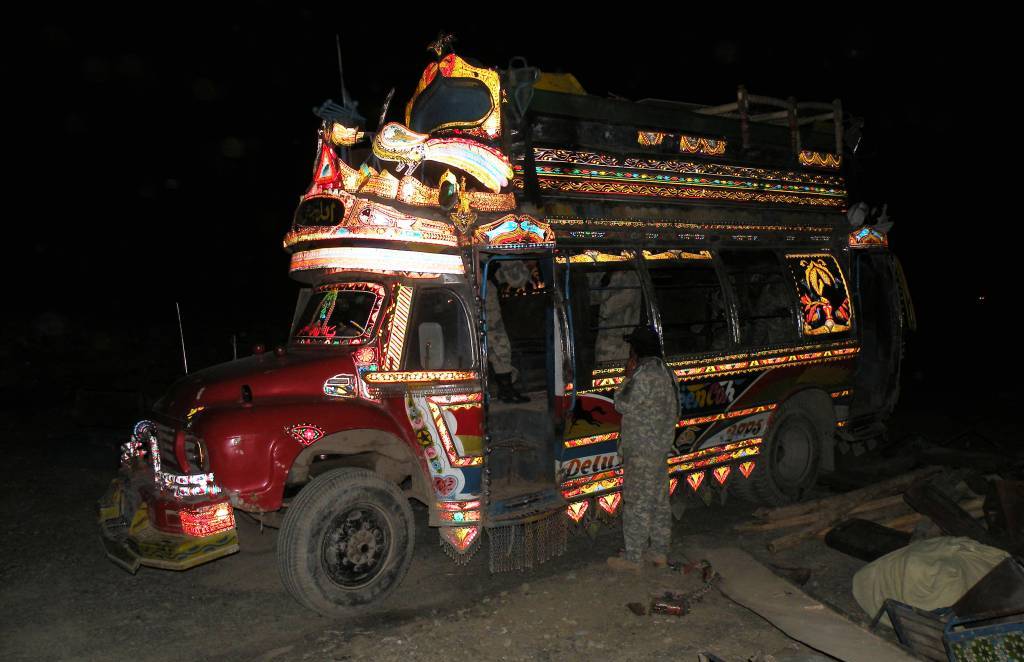
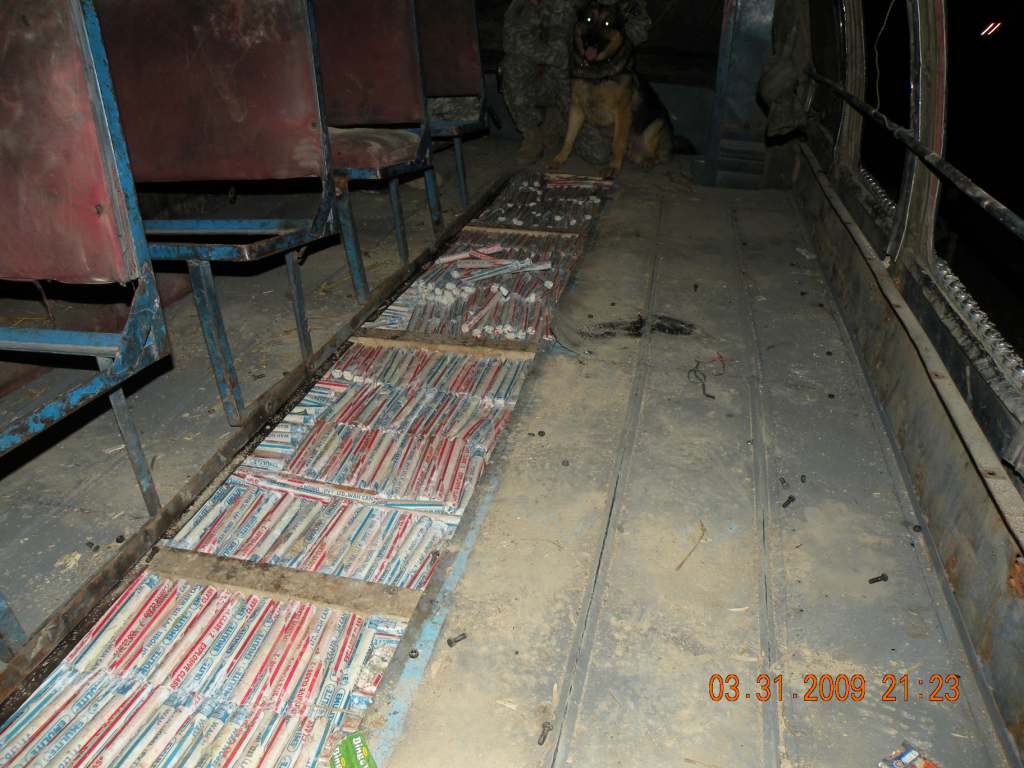
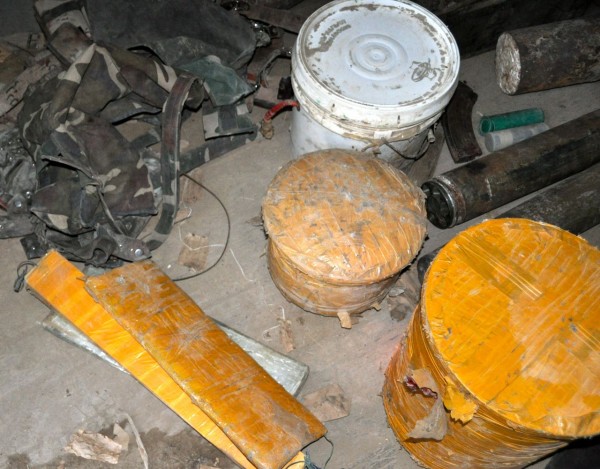
Who do you think gained custody of all that Emulite? My guess would be Marshal Fahim, who spent his years out of power (2004 -2009) doing warlord shit like kidnapping people for ransom as well as the usual smuggling of fungible commodities like wood, gemstones, and commercial-grade explosives. In 2009 President Karzai selected Fahim to be his Vice President despite loud, boisterous bitching by international politicos that Fahim was clearly an unrepentant warlord. He was a powerful warlord who could deliver votes from the Northern provinces because he ran a disciplined criminal organization.
I must admit that Marshal Fahim was very good to me because I mentored and helped set up the Seddiqi Security company, which was owned by some of his relatives. I had to go talk to the Marshall after an attempt to get an import license for Baltika Beer on behalf of my buddies at Seddiqi Security. After I explained I had no financial stake in the venture and was just helping out my friends from the Panjshir with administrative support, he let me off with a stern warning to desist from business ventures that would piss off the Ministry for the Propagation of Virtue and Prevention of Vice.
The Spy Ops propaganda fest would be funny if not for the fact that the joke is on us.


